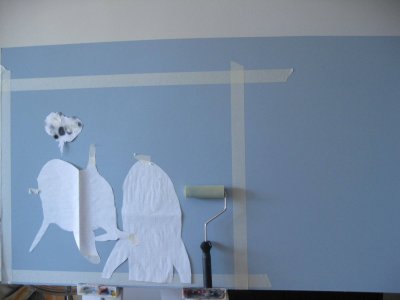One moore TIP!
Caution! you need to practice and test it before tryin to your artwork!
making fast skin/leather/fabric texture:
1.So, we got latex base
2. Spray reducer (alcohol+glyserin) with your airbrush to texture area, wait a while, spray again if you need.. (You can use stencils too).
Latex and color layer will melt a little bit and you can extremely careful with your finger to rub and mix them with each other.
Now the color is very soft and very easy to scratch with blade too.
do not wipe scratching loose color particles, until the area is completely dry!
Good luck!

In the picture: Edge of the feather, eye highlights and white hairs is Scratched. Hat, scarve and skin rubbed with a finger.

my works does anyone pay so much that it would be possible to waste time weeks to make a single image, so I need to develop the ways to make a valid textures as fast as possible




